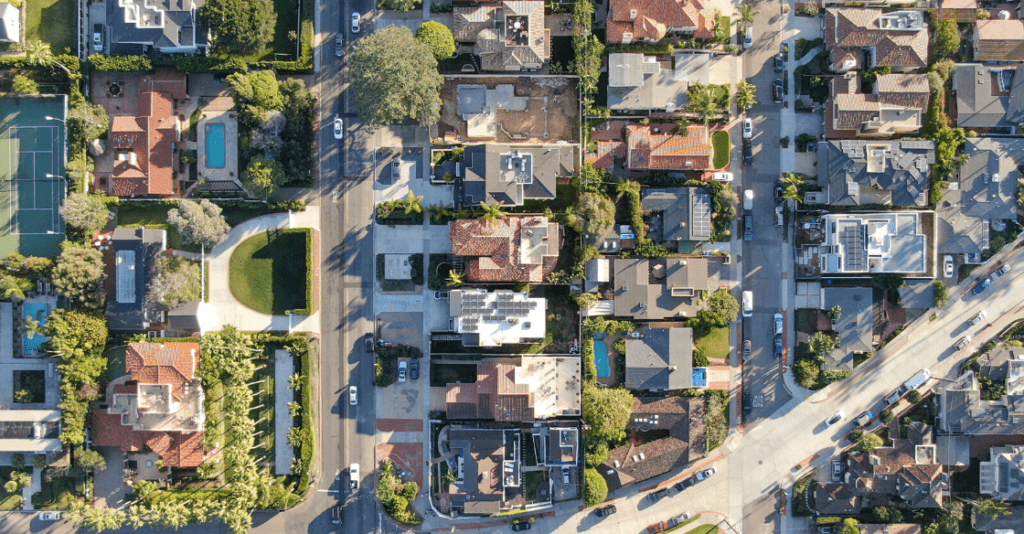Mortgage rates are at an all-time low right now, and while social-distancing recommendations make it a bit trickier to do the typical open-house rounds for buyers and sellers, it’s the perfect environment for current homeowners to refinance.
In fact, these falling interest rates have led to an influx of refinancing applications across the country, and many lenders are still struggling to keep up with the demand. The good news is, the marketplace is expected to level out, and some experts even say the rates will continue decreasing.
So if you’re considering refinancing but haven’t pulled the trigger, it’s a good time to think about your options.
First up on your to-do list: figure out which type of refinancing is right for you. In this article, we’ll focus on cash-out refinancing, when it makes sense, and how you can use it to your advantage.
What is a Cash-Out Refinance?
Simply put, a cash-out refinance is when you take a loan out on your current property at a higher amount than you originally paid, and you receive the excess as a cash payment. That money is then yours to keep and use, although sometimes they come with rules for how you can use the funds (known as limited cash-out refinancing, in this scenario).
This is an alluring option for homeowners who want some extra cash for things like renovations and improvements; you also don’t have to pay taxes on any money you earn in the transaction, since it doesn’t count as income.
However, there are some important things to keep in mind. First, you can expect to pay closing costs of around 2% to 5% of your new loan amount. Second, cash-out refinance rates are typically higher than a normal refinance, since the lender takes on a bit more risk. Third, your new loan may have different terms than your original loan, so you’ll want to double check all of the fine print before sealing the deal.
Ultimately, it’s smart to run the numbers and factor in all of the costs before deciding if cashing out your mortgage is right for you.
How Much Can I Get, and When Will I Get It?
As a general rule, the maximum amount you can withdraw is 80% of your loan-to-value ratio (LTV). As an example, let’s say your home is worth $300,000 and you still owe $100,000 on the mortgage. Ensuring you keep 20% equity in your home after the transaction, this means you could get up to $140,000.
Once your cash-out refinance request is submitted, it typically takes from 30 to 45 days to close. This is usually faster than a home equity loan or home equity line of credit (HELOC), so it’s a good option if you need the money fast.
When a Cash-Out Refinance Makes Sense
If you have at least 30% equity in your home, a good credit score (minimum of 620, ideally—but check with your lender on their requirements), and a good plan for how you’ll use the extra money, you’re on the right track.
While securing a lower interest rate is often a primary reason for refinancing, a cash-out refi has the added bonus of getting some cash in hand. The most common ways that people use this money is spending it on home improvement projects, consolidating or paying off high-interest debt, or paying for higher education.
But another lesser-known strategy is to use the money to buy an investment property or use as a down payment on another home that you plan on renting out, which we’ll dive further into in the next section.
Using Your Cash-Out Refi to Purchase an Investment Property
As we mentioned earlier, mortgage rates are at an all-time low right now. Why not take advantage of the market and finally purchase that investment property? Taking a cash-out refinance to buy an investment or rental home is one of the best ways to put your hard-earned equity to good use.
The financial principles are simple. By making smart investments in real estate, you can make money in two ways. First, real estate will always appreciate when you look at it long-term. Second, by renting it out, you can generate a monthly income.
One caveat to keep in mind: primary mortgage insurance (PMI) doesn’t apply to investment properties, so you’ll need a down payment of at least 20% of the home’s purchase price. So, make sure the numbers add up before you take the leap.

How Much Can I Earn From a Rental Property?
The profit you can make from monthly rent payments depends on the area you’re in, how good of a deal you get on the home, and how you manage your expenses month-to-month.
That being said, maintaining rental properties are great investments because they can often become passive income when everything lines up perfectly—an up-and-coming neighborhood can command higher rent each year, and if the home doesn’t need a ton of maintenance, you might not have to do much work at all throughout the year. Simply sit back, collect the rent checks, and enjoy your new source of income!
How Much Can I Earn From a Flip?
Another common strategy is to use the money from your cash-out refinance to cover the down payment and improvement costs on a house you intend to flip— known as a “fix and flip.” Similar to the rental property option, you’ll need to run the numbers to make sure the costs and risks will be worth it. This can be a risky strategy if you’re not familiar with costs and timelines for improving a property, and you’re also at the whim of the market when you are looking to sell.
Let Mortgage Goat Guide You
If you have the equity and a great plan in place, it’s the perfect time to take advantage of a cash-out refinance. And here at Mortgage Goat, we’re here to help you along the way. We work with over 100 lenders to secure you the best rate out there. All you have to do is take a few minutes to fill out our simple, 100% online application.
Ready to learn more? Contact us to start your pre-approval instantly.




